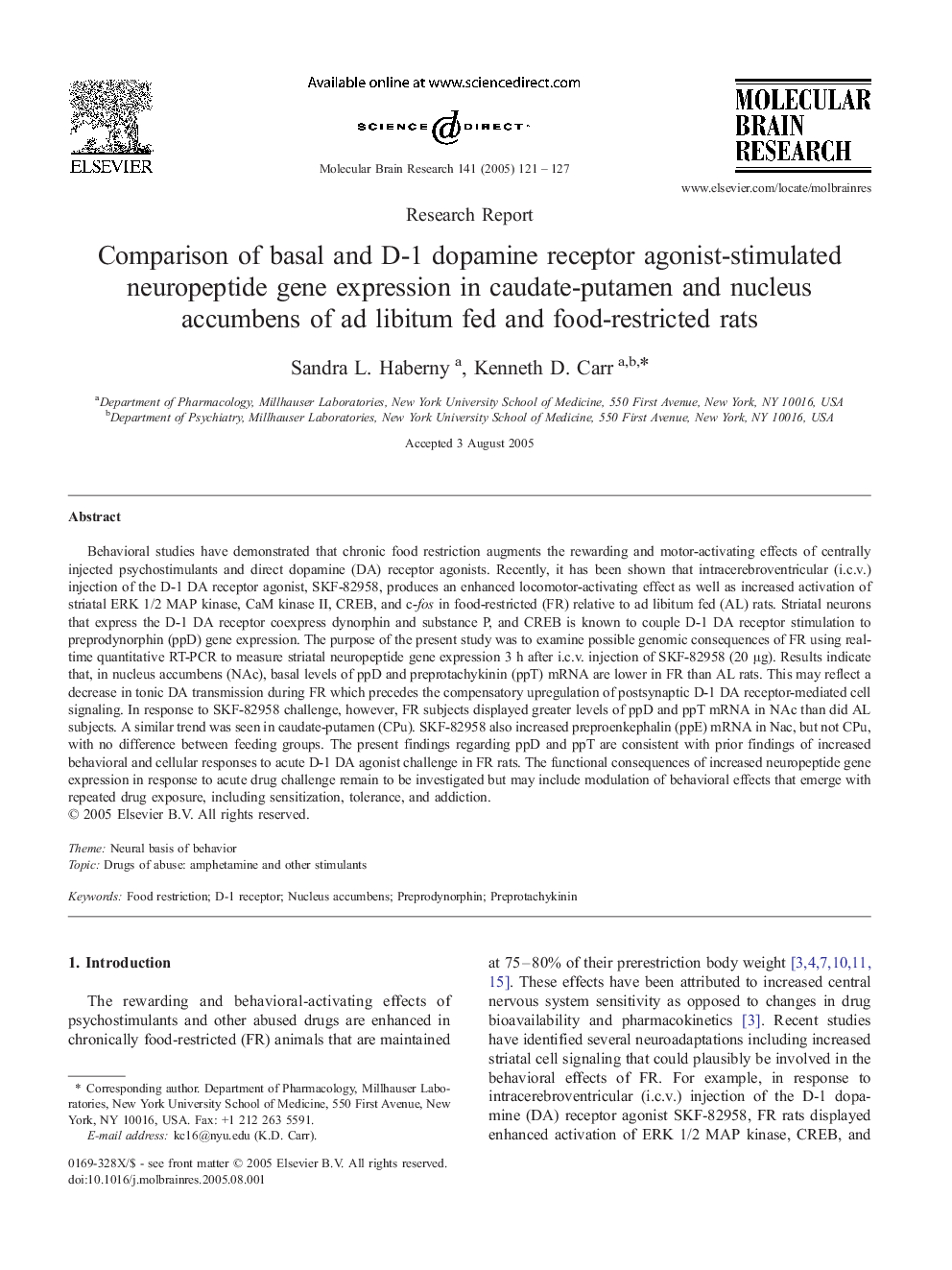| Article ID | Journal | Published Year | Pages | File Type |
|---|---|---|---|---|
| 9410529 | Molecular Brain Research | 2005 | 7 Pages |
Abstract
Behavioral studies have demonstrated that chronic food restriction augments the rewarding and motor-activating effects of centrally injected psychostimulants and direct dopamine (DA) receptor agonists. Recently, it has been shown that intracerebroventricular (i.c.v.) injection of the D-1 DA receptor agonist, SKF-82958, produces an enhanced locomotor-activating effect as well as increased activation of striatal ERK 1/2 MAP kinase, CaM kinase II, CREB, and c-fos in food-restricted (FR) relative to ad libitum fed (AL) rats. Striatal neurons that express the D-1 DA receptor coexpress dynorphin and substance P, and CREB is known to couple D-1 DA receptor stimulation to preprodynorphin (ppD) gene expression. The purpose of the present study was to examine possible genomic consequences of FR using real-time quantitative RT-PCR to measure striatal neuropeptide gene expression 3 h after i.c.v. injection of SKF-82958 (20 μg). Results indicate that, in nucleus accumbens (NAc), basal levels of ppD and preprotachykinin (ppT) mRNA are lower in FR than AL rats. This may reflect a decrease in tonic DA transmission during FR which precedes the compensatory upregulation of postsynaptic D-1 DA receptor-mediated cell signaling. In response to SKF-82958 challenge, however, FR subjects displayed greater levels of ppD and ppT mRNA in NAc than did AL subjects. A similar trend was seen in caudate-putamen (CPu). SKF-82958 also increased preproenkephalin (ppE) mRNA in Nac, but not CPu, with no difference between feeding groups. The present findings regarding ppD and ppT are consistent with prior findings of increased behavioral and cellular responses to acute D-1 DA agonist challenge in FR rats. The functional consequences of increased neuropeptide gene expression in response to acute drug challenge remain to be investigated but may include modulation of behavioral effects that emerge with repeated drug exposure, including sensitization, tolerance, and addiction.
Keywords
Related Topics
Life Sciences
Neuroscience
Cellular and Molecular Neuroscience
Authors
Sandra L. Haberny, Kenneth D. Carr,
